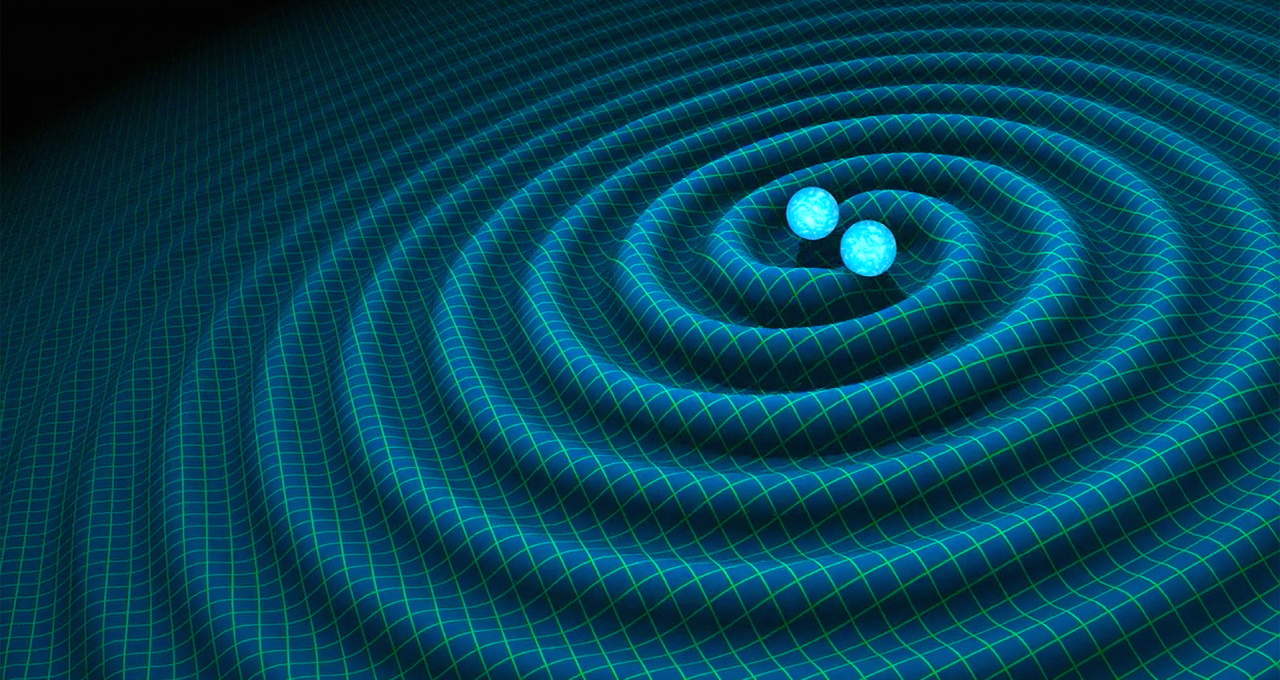Eliu Huerta is harnessing AI and high performance computing (HPC) to observe the cosmos more clearly.
For several years, the astrophysics researcher has been chipping away at a grand challenge, using data to detect signals produced by collisions of black holes and neutron stars. If his next big design for a neural network is successful, astrophysicists will use it to find more black holes and study them in more detail than ever.
Such insights could help answer fundamental questions about the universe. They may even add a few new pages to the physics textbook.
Huerta studies gravitational waves, the echoes from dense stellar remnants that collided long ago and far away. Since Albert Einstein first predicted them in his theory of relativity, academics debated whether these ripples in the space-time fabric really exist.
Researchers ended the debate in 2015 when they observed gravitational waves for the first time. They used pattern-matching techniques on data from the Laser Interferometer Gravitational-Wave Observatory (LIGO), home to some of the most sensitive instruments in science.
Detecting Black Holes Faster with AI
Confirming the presence of just one collision took a supercomputer to process data the instruments could gather in a single day. In 2017, Huerta’s team showed how a deep neural network running on an NVIDIA GPU could find gravitational waves with the same accuracy in a fraction of the time.
“We were orders of magnitude faster and we could even see signals the traditional techniques missed and we did not train our neural net for,” said Huerta, who leads AI and gravity groups at the National Center for Supercomputing Applications at the University of Illinois, Urbana-Champaign.
The AI model Huerta used was based on data from tens of thousands of waveforms. He trained it on a single NVIDIA GPU in less than three hours.
Seeing in Detail How Black Holes Spin
This year, Huerta and two of his students created a more sophisticated neural network that can detect how two colliding black holes spin. Their AI model even accurately measured the faint signals of a small black hole when it was merging with a larger one.
It required data on 1.5 million waveforms. An IBM POWER9-based system with 64 NVIDIA V100 Tensor Core GPUs took 12 hours to train the resulting neural network.
To accelerate their work, Huerta’s team got access to 1,536 V100 GPUs on 256 nodes of the IBM AC922 Summit supercomputer at Oak Ridge National Laboratory.
Taking advantage of NVIDIA NVLink, a connection between Summit’s GPUs and its IBM POWER9 CPUs, they trained the AI model in just 1.2 hours.
The results, described in a paper in Physics Letters B, “show how the combination of AI and HPC can solve grand challenges in astrophysics,” he said.
Interestingly, the team’s work is based on WaveNet, a popular AI model for converting text-to-speech. It’s one of many examples of how AI technology that’s rapidly evolving in consumer and enterprise use cases is crossing over to serve the needs of cutting-edge science.
The Next Big Leap into Black Holes
So far, Huerta has used data from supercomputer simulations to detect and describe the primary characteristics of gravitational waves. Over the next year, he aims to use actual LIGO data to capture the more nuanced secondary characteristics of gravitational waves.
“It’s time to go beyond low-hanging fruit and show the combination of HPC and AI can address production-scale problems in astrophysics that neither approach can accomplish separately,” he said.
The new details could help scientists determine more accurately where black holes collided. Such information could help them more accurately calculate the Hubble constant, a measure of how fast the universe is expanding.
The work may require tracking as many as 200 million waveforms, generating training datasets 100x larger than Huerta’s team used so far. The good news is, as part of their July paper, they’ve already determined their algorithms can scale to at least 1,024 nodes on Summit.
Tallying Up the Promise of HPC+AI
Huerta believes he’s just scratching the surface of the promise of HPC+AI. “The datasets will continue to grow, so to run production algorithms you need to go big, there’s no way around that,” he said.
Meanwhile, use of AI is expanding to adjacent areas. The team used neural nets to classify the many, many galaxies found in electromagnetic surveys of the sky, work NVIDIA CEO Jensen Huang highlighted in his GTC keynote in May.
Separately, one of Huerta’s grad students used AI to describe the turbulence when neutron stars merge more efficiently than previous techniques. “It’s another place where we can go into the traditional software stack scientists use and replace an existing model with an accelerated neural network,” Huerta said.
To accelerate the adoption of its work, the team has released as open source code its AI models for cosmology and gravitational wave astrophysics.
“When people read these papers they may think it’s too good to be true, so we let them convince themselves that we are getting the results we reported,” he said.
The Road to Space Started at Home
As is often the case with landmark achievements, there’s a parent to thank.
“My dad was an avid reader. We spent lots of time together doing math and reading books on a wide range of topics,” Huerta recalled.
“When I was 13, he brought home The Meaning of Relativity by Einstein. It was way over my head, but a really interesting read.
“A year or so later he bought A Brief History of Time by Stephen Hawking. I read it and thought it would be great to go to Cambridge and learn about gravity. Years later that actually happened,” he said.
The rest is a history that Huerta is still writing.
For more on Huerta’s work, check on an article from Oak Ridge National Laboratory.
At top: An artist’s impression of gravitational waves generated by binary neutron stars. Credit: R. Hurt, Caltech/NASA Jet Propulsion Lab
